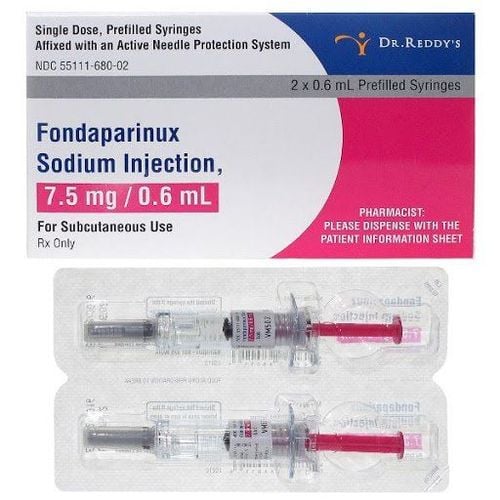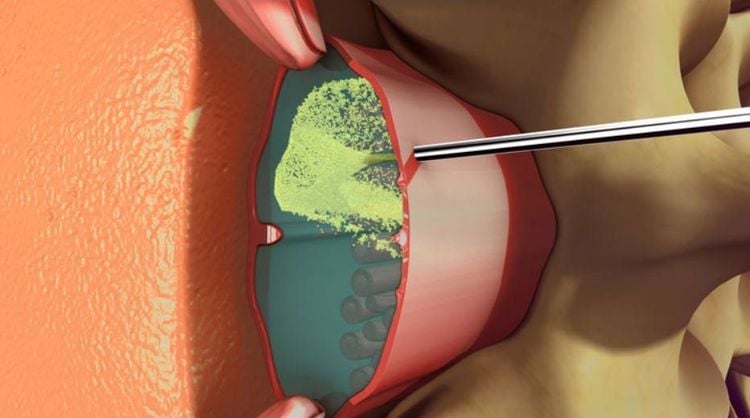This is an automatically translated article.
Posted by Doctor Nguyen Thi Hoai Nam - Department of Surgical Anesthesia, Vinmec Central Park International General HospitalAlthough epidural analgesia is generally considered safe, some associated risks are suspected. The majority of side effects are related to drug use, eg hypotension and motor block due to anesthetic and nausea, opioid pruritus...
1. The dangers of an epidural
Significant dangers of epidural anesthesia such as hematoma or spinal abscess are rare but documented. A study of 1,260,000 cases of spinal anesthesia and 450,000 cases of epidurals, recorded 127 cases of serious neurological complications including 85 cases of permanent nerve damage. The authors claim the risk is more than previously thought. A recent report of a 2-week national census-based study in the United Kingdom using data on 707,455 cases of CNS blockade concluded that ''the data are reassuring and suggested that CNS blockade had a low rate of serious complications, many of which resolved within 6 months. However, mortality (over 3-6 years) and the large number of serious neurological complications each year in the UK associated with axial blockade must be weighed against the substantial benefits of epidural analgesia.
The debate about the 'acceptably low' risk is likely to continue with the overall benefit-risk assessment seemingly shifting in favor of non-epidural techniques. The technique of epidural analgesia and analgesia is not without its complications. Anesthesiologists must follow guidelines from National Association of Regional Anesthesiologists such as the American Society of Regional Anesthesiology and Pain Management when treating patients on anticoagulants. The duration of anesthesia and catheter insertion or withdrawal should be consistent with the pharmacokinetics of anticoagulants or in combination with anticoagulants. Newer drugs such as fondaparinux have longer half-lives, and both the American Society of Regional Anesthesiology and Pain Medicine and the American College of Thoracic Physicians recommend against use when axial and nerve block is involved. peripheral.

Hình ảnh thuốc fondaparinux được sử dụng trong gây tê
For patients with spinal or epidural anaesthesia, close monitoring is required and high alarm is suspected for advanced spinal hematoma because early detection and decompression can significantly improve outcomes. An analysis of medical records related to regional anesthesia in the UK found that insurance costs associated with epidurals are much higher than those associated with regional anesthesia. A survey of Australian anesthesiologists found that 82% have had fewer epidurals in practice in recent years. The two most common reasons are apprehension about the law and lack of evidence of merit. Although serious adverse events are uncommon, patients should be informed about common events such as urinary retention and pruritus and should be advised of the risk of serious neurological complications such as paralysis. The risks and benefits should be assessed on an individual basis.
2. Failure rate of epidural analgesia
The duration of postoperative epidural analgesia may affect the outcome. Usually epidural anesthesia is performed right before surgery and continuous infusion 2-4 days after surgery. An epidural is successful with good analgesia and ease of movement and postoperative recovery during catheter retention. There are no reliable data on the failure rate of epidural analgesia during this postoperative period.
One article notes “up to 50% of epidurals fail or provide insufficient pain relief” and “epidurals are rarely a problem – the problem is what to do with it when problems start to arise” . The failure rate was significant, 32% in 25,000 patients. Only institution-specific audits can provide cost-benefit data and make decisions about whether to continue or stop epidural analgesia in these institutions. It seems that very few organizations perform such routine checks, so that most anesthesiologists have no idea how successful (or unsuccessful) their epidural actually is. There is very little reported literature on this important issue.

Thuốc gây tê được bơm vào ngoài màng cứng thông qua dụng cụ chuyên dụng
Translated by Narinder Rawal, MD, PhD, Epidural Technique for Postoperative Pain Gold Standard No More?, (Reg Anesth Pain Med 2012;37: 310 - 317)














